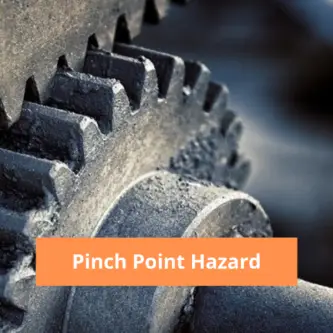Cables are an essential part of any electrical system. They are responsible for carrying electrical power from one place to another.
However, in rare instances, cables can catch fire, which can be dangerous and can cause severe damage.
In this article, we will explore the various causes of cable fires and how to prevent them.
Causes of Cable Fires:
Overloading:
Overloading occurs when there is too much current flowing through a cable, which causes it to heat up.
If the heat generated is not dissipated quickly enough, it can cause the cable to catch fire. Overloading can be caused by using cables that are not rated for the amount of current flowing through them, or by having too many devices connected to a single circuit.
Damaged Insulation:
The insulation on a cable is designed to protect the conductor from coming into contact with other conductors or objects.
If the insulation is damaged or worn, the conductor can come into contact with other conductors or objects, which can cause a short circuit. This can generate enough heat to cause the cable to catch fire.
Poor Installation:
Poor installation can cause cables to catch fire. If cables are not installed correctly, they can become damaged or come into contact with other objects, which can cause a short circuit.
Additionally, if cables are installed too tightly, they can generate heat, which can cause the insulation to melt and the cable to catch fire.
Overheating:
Overheating can be caused by a variety of factors, including overloading, poor installation, and ambient temperature.
If a cable is exposed to high temperatures for an extended period, the insulation can degrade, which can cause a short circuit and a fire. Read my comprehensive article cable overheating for more information.
Electrical Arcing:
Electrical arcing occurs when an electrical discharge jumps from one conductor to another. This can generate enough heat to cause the cable to catch fire.
Arcing can be caused by damaged insulation, loose connections, or improper installation.
Preventing cable fire
- Choose quality cables: Invest in high-quality cables that are designed for your specific application. Avoid using cheap, low-quality cables that may not meet safety standards.
- Check for damage: Regularly inspect your cables for signs of damage, such as fraying, cracking, or exposed wires. Damaged cables can increase the risk of electrical fires.
- Proper installation: Ensure that your cables are installed correctly and are not overloaded. Avoid running cables through walls or ceilings, and ensure that they are not pinched or twisted.
- Maintain proper ventilation: Ensure that your cables are not covered by insulation or other materials that could trap heat and cause them to overheat.
- Use cable trays: Cable trays can help to protect your cables from damage and ensure that they are properly supported and ventilated.
- Keep flammable materials away: Keep flammable materials away from your cables to reduce the risk of ignition.
- Have a fire safety plan: In case of a cable fire, have a fire safety plan in place that includes an evacuation plan and the location of fire extinguishers. Ensure that everyone in the building knows the plan and is trained on how to use the fire extinguishers.
Conclusion
| Causes of Cable Fires | Preventive Measures |
|---|---|
| Overloading | Use cables that are rated for the amount of current flowing through them. Avoid connecting too many devices to a single circuit. |
| Damaged Insulation | Regularly inspect cables for signs of damage. Replace damaged cables as soon as possible. |
| Poor Installation | Ensure cables are installed correctly and not damaged. Avoid running cables through walls or ceilings. Ensure cables are not installed too tightly. |
| Overheating | Maintain proper ventilation. Ensure cables are not covered by insulation or other materials. Use cable trays. |
| Electrical Arcing | Regularly inspect cables for signs of damage. Ensure cables are installed correctly and not damaged. Avoid loose connections. |
By taking these preventive measures, you can significantly reduce the risk of cable fires and ensure the safety of your building and its occupants.
you work With Electricity! Don’t leave empty-handed!
Looking to stay ahead of the game in the world of electrical engineering? Subscribe to my YouTube channel and gain access to exclusive content you won’t find anywhere else!
The staff I recommend (Amazon Affiliate Links to products I believe are high quality):
- Economy 120 Volt/60Hz AC Power Source – Step-Down Voltage & Frequency Converters 1800W
- UNI-T Digital Multimeter Tester UT139C
- 50-Amp Extension Cord for RV “100ft”
- Voltage Stabilizer 110/220v
- Hair Dryer “best selling“
- TOSHIBA EM131A5C-BS Countertop Microwave Ovens
Disclaimer: This contains affiliate links to Amazon products. I may earn a commission for purchases made through these links.

